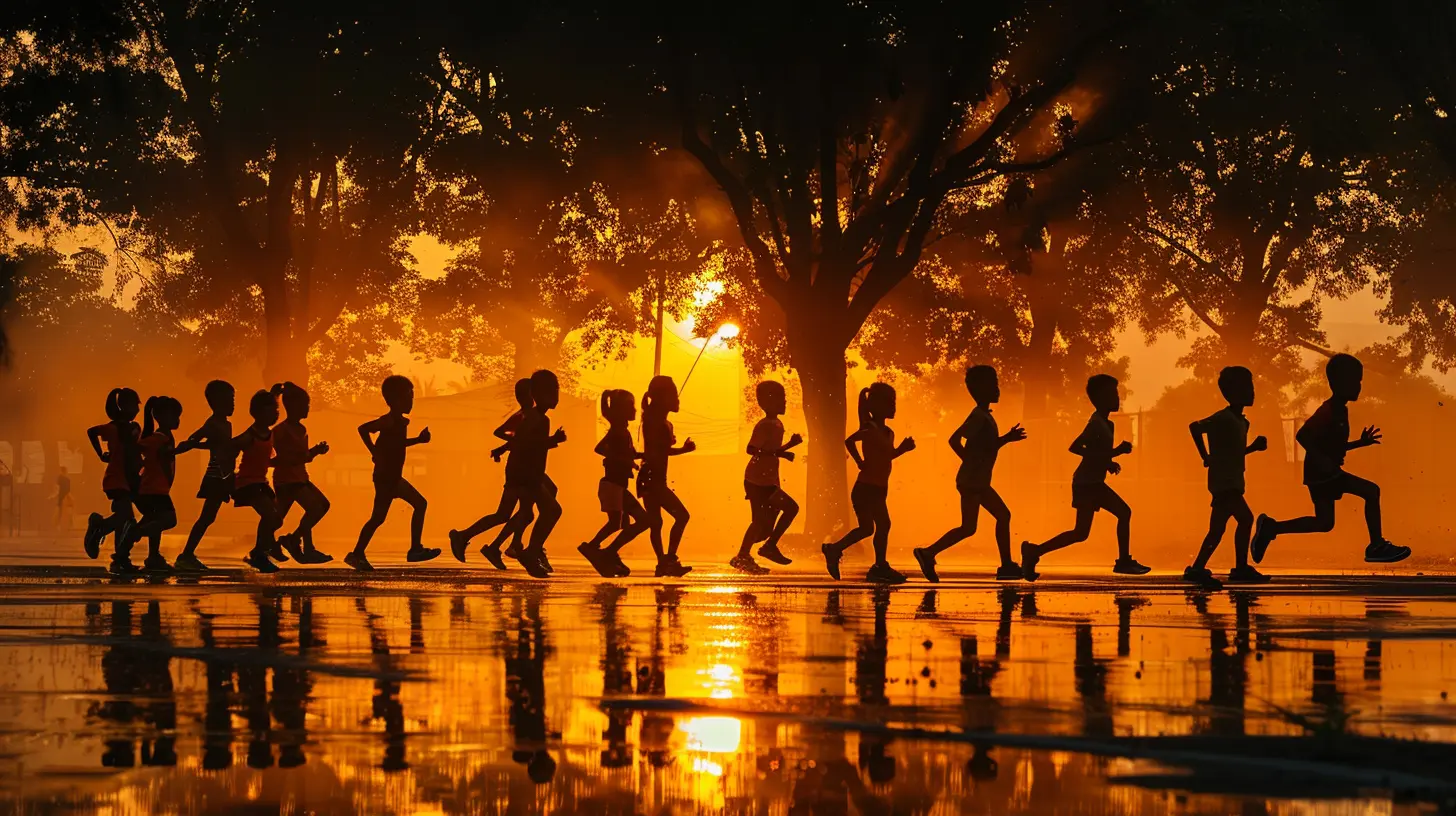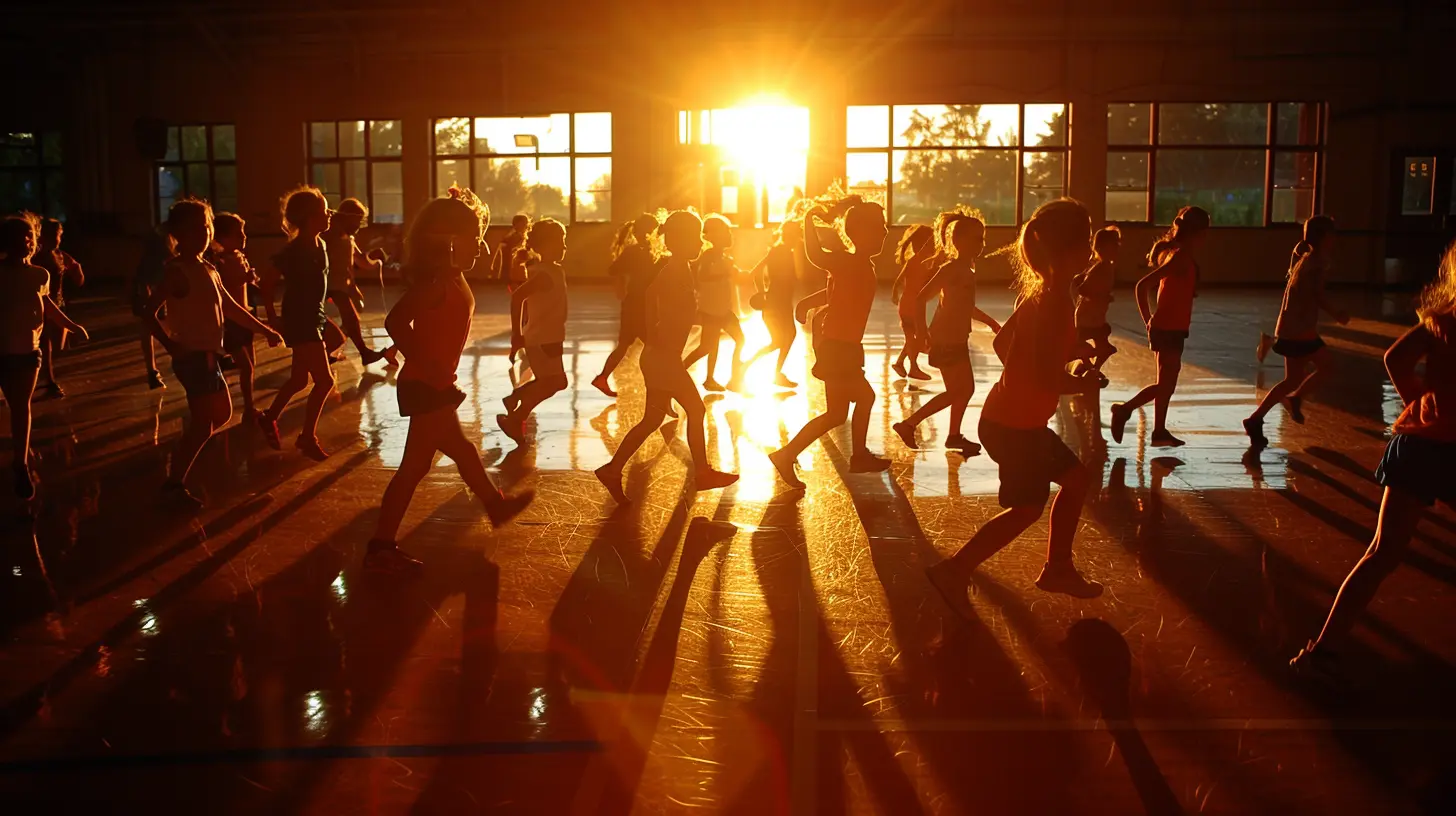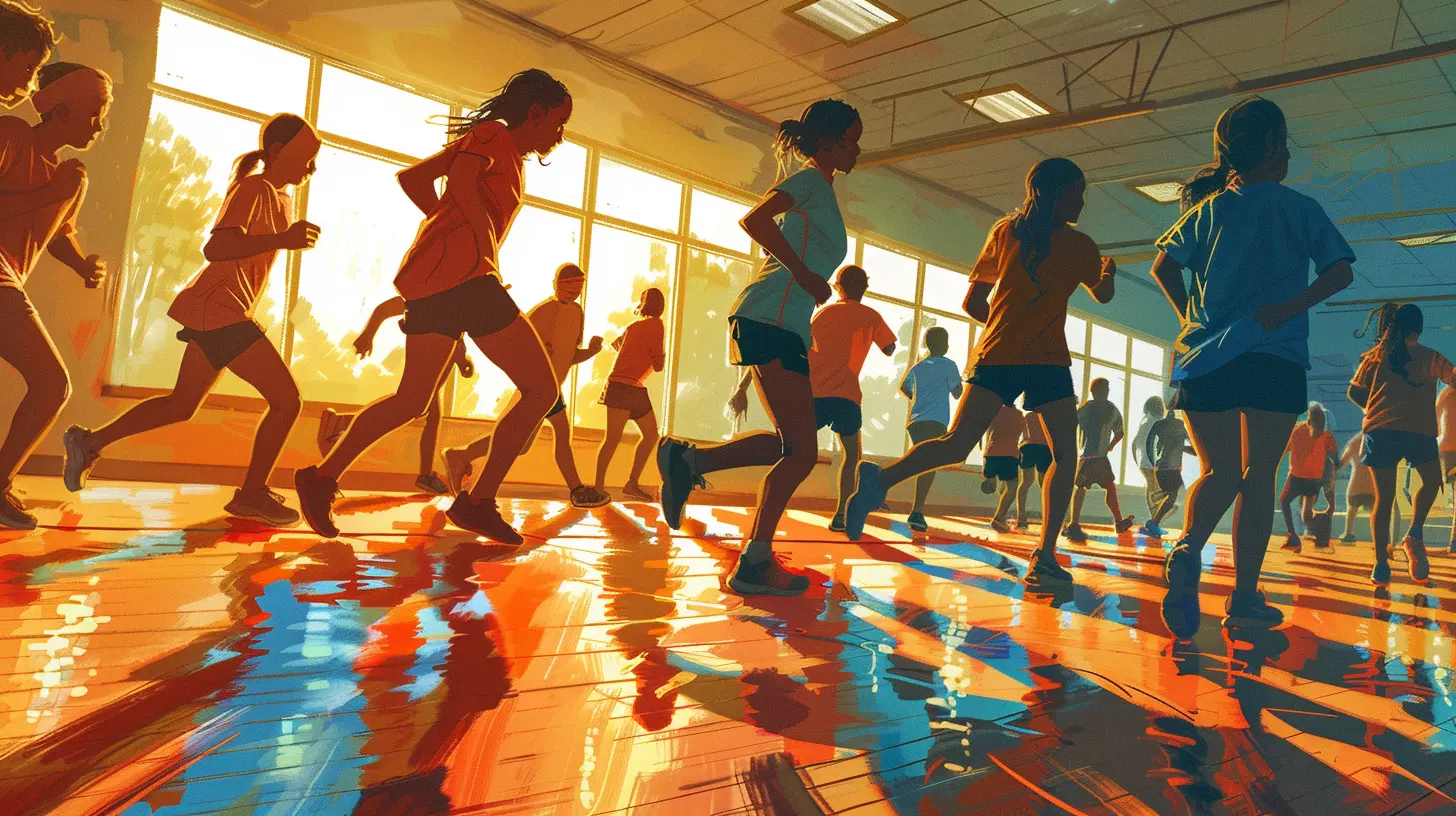The Importance of Warm-Ups and Cool-Downs in PE
13 August 2025
Let’s be real—when you're heading into PE class or hitting the gym, the last thing on your mind might be those few minutes of stretching, lunges, or light jogging at the beginning and end of the session. You're probably more pumped about the actual game, workout, or activity ahead. But here's the thing: skipping your warm-up and cool-down is like jumping into a race without tying your shoes or slamming on the brakes after driving 100 mph. Not a great idea, right?
Warming up and cooling down aren’t just "nice-to-have" extras—they’re essential. They’re the unsung heroes of every physical education class and workout routine, keeping us safe, helping us perform better, and helping our bodies recover. Whether you’re a student, teacher, athlete, or someone just trying to stay active—this stuff matters.
So, let’s break it all down—why warm-ups and cool-downs are so important and how they make a real difference in physical education (PE).
Why Warm-Ups Matter: More Than Just Fancy Stretching
Warm-ups are like the pre-game show for your body. They get everything—muscles, joints, heart, lungs—ready to go. Think of your body like a car. You wouldn’t start it in freezing weather and immediately floor it, right? You ease into it, letting the engine warm up. Same goes for your body.1. Wake Up, Muscles!
When you warm up, you're increasing your body’s core temperature gradually. This helps get blood flowing to your muscles, making them more elastic and ready for action. Tighter muscles are more prone to injuries like strains or tears. A good warm-up loosens them up, making you more mobile and agile.2. Get That Heart Pumping (But Not Racing)
A solid warm-up slowly raises your heart rate and breathing. Instead of shocking your cardiovascular system with sudden activity, you're easing it into gear. This leads to better endurance and a smoother performance during heavy activity.3. Sharpened Focus
Warming up isn’t just physical—it’s mental too. It gives you a few minutes to transition from "chill mode" to "game mode". You mentally prepare for what’s coming, whether that’s a sprint, a game of basketball, or a round of pushups.4. Injury Prevention
This one’s huge! Proper warm-ups lower your risk of injuries—plain and simple. You’re priming your body for movement, which can prevent sprains, strains, and muscle soreness. Athletes swear by warm-ups, and for good reason—they work.
Effective Warm-Up Activities You Can Try
Not every warm-up is created equal. A good warm-up is dynamic, meaning it involves movement—not just static stretching. Here are some go-to warm-up activities:- Light Jogging or Brisk Walking (3-5 minutes): Gets your blood flowing without overdoing it.
- Arm Circles and Shoulder Rolls: Great for upper body prep.
- Leg Swings and Hip Rotations: Wake up those lower limbs.
- High Knees and Butt Kicks: Add a cardio boost.
- Dynamic Lunges or Jumping Jacks: Engage multiple muscle groups.
The goal here isn’t to exhaust yourself—it’s just to get your body in gear.
So, What About Cool-Downs?
Here’s the part everyone loves to skip. After crushing a workout or dominating a game, you might think, “I’m done!” But nope—you’re only halfway there. Cooling down is just as important as warming up. It’s like giving your body a thank-you hug after all that hard work. And honestly, it deserves it.1. Bring Your Heart Rate Down Slowly
Imagine slamming the brakes in a moving car. That’s what you do to your body when you stop all movement suddenly. Cooling down gives your heart, lungs, and blood pressure time to gradually return to normal levels. This helps prevent dizziness, light-headedness, and even fainting.2. Flush Out the Lactic Acid
Ever heard of that sore, stiff feeling you get the day after a tough workout? That’s partially due to lactic acid building up in your muscles. A good cool-down helps your body flush that stuff out more efficiently, reducing soreness and helping quicker recovery.3. Flexibility Boost
Your muscles are warm and more pliable right after exercise, making it the perfect time to stretch. Static stretches during your cool-down help improve flexibility and prevent stiffness.4. Calm the Mind
Just as warm-ups prepare you mentally, cool-downs help you relax and wind down. It’s a small moment of calm and reflection after an intense session. It’s not just about your body—it’s about your brain too.
Best Cool-Down Routines to Try
Let’s keep it simple. Here are a few easy and effective cool-down methods you can mix and match:- Slow Walking or Light Jogging (3-5 minutes): Helps bring heart rate down.
- Hamstring and Calf Stretches: These muscles take a beating—give them some love.
- Quadriceps and Hip Flexor Stretches: Perfect after running or jumping.
- Child’s Pose or Cat-Cow Stretch: Gentle and relaxing for the back.
- Neck Rolls and Gentle Shoulder Stretches: Wind things down from top to bottom.
Hold each stretch for at least 20–30 seconds and breathe deeply. This isn't a race.
Why It’s Even More Important in PE Classes
Alright, so now you know warm-ups and cool-downs are awesome for any workout. But why do they matter even more in a PE class setting? Let’s break it down:1. Students Are Still Growing
Young bodies are developing, which means joints, muscles, and bones are more vulnerable. A thoughtful warm-up can make a ton of difference in preventing injuries during PE activities.2. Builds Healthy Habits Early
Incorporating warm-ups and cool-downs in school PE teaches students the right way to exercise. Habits formed in school often stick for life. So introducing proper routines early builds lifelong fitness habits.3. Prepares the Mind for Learning
Physical activity isn’t just about the body—there’s a strong mind-body connection. A warm-up session helps kids shift their focus, release tension, and get into the learning zone. A cool-down helps them reset for their next academic class.4. Reduces the Risk of Negative PE Experiences
Nobody likes pulling a muscle or feeling dizzy after PE. These experiences can turn students off from exercise altogether. Warm-ups and cool-downs help ensure that students associate physical activity with fun and safety—not pain or discomfort.Common Mistakes to Avoid
So you’re sold on the power of warm-ups and cool-downs—awesome! But let’s quickly look at a few common slip-ups people make (and how to steer clear of them):- ❌ Skipping Them Completely: This is the biggest offense. Even 5 minutes can make a difference.
- ❌ Static Stretching During Warm-Up: Save the long holds for the cool-down. Warm-ups should be active.
- ❌ Rushing Through It: Don’t breeze through just to get it over with. Take your time and focus on how your body feels.
- ❌ Doing the Same Routine Every Time: Mix things up. Engage different muscles. Keep it interesting.
Tips to Make Your Warm-Ups and Cool-Downs Count
Let’s wrap things up with a few golden nuggets:- ✅ Keep it fun: Add music, vary the movements, maybe even make it a game.
- ✅ Be consistent: Make it a non-negotiable part of your routine.
- ✅ Adjust based on intensity: Harder workouts need longer warm-ups and cool-downs.
- ✅ Listen to your body: Every day is different—tune in, and adjust as needed.
- ✅ Educate others: Share the love! If you're a teacher or coach, make sure your students or athletes understand the "why" behind it all.
Final Thoughts
Warm-ups and cool-downs aren't just “extras”—they’re the foundation of every good PE session or workout routine. They help you move better, feel better, and bounce back quicker. They protect your body, prepare your mind, and honestly, they just make everything go smoother.Think of them as bookends to a great story. Without them, your PE session is incomplete.
So next time you’re tempted to jump right into action or flop down on the bench as soon as you're done—pause. Take five. Move a little. Breathe. Stretch. Your body will thank you.
all images in this post were generated using AI tools
Category:
Physical EducationAuthor:

Monica O`Neal
Discussion
rate this article
1 comments
Talis McLanahan
Warm-ups and cool-downs are essential for preventing injuries and enhancing performance in physical education. Ignoring them can undermine the benefits of exercise routines.
August 17, 2025 at 3:19 AM

Monica O`Neal
Thank you for emphasizing the critical role of warm-ups and cool-downs! They truly are foundational for injury prevention and optimizing performance in physical education.


